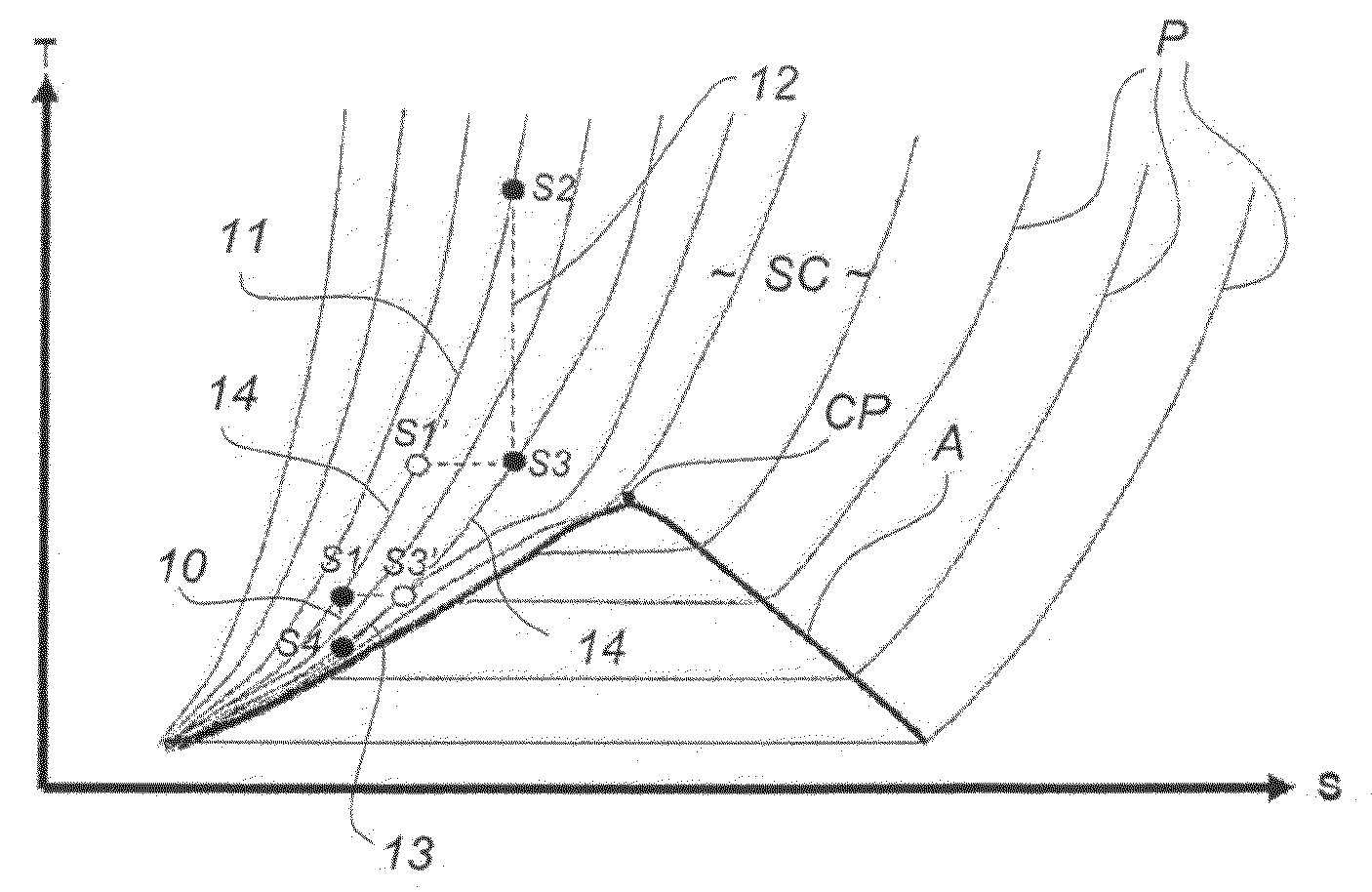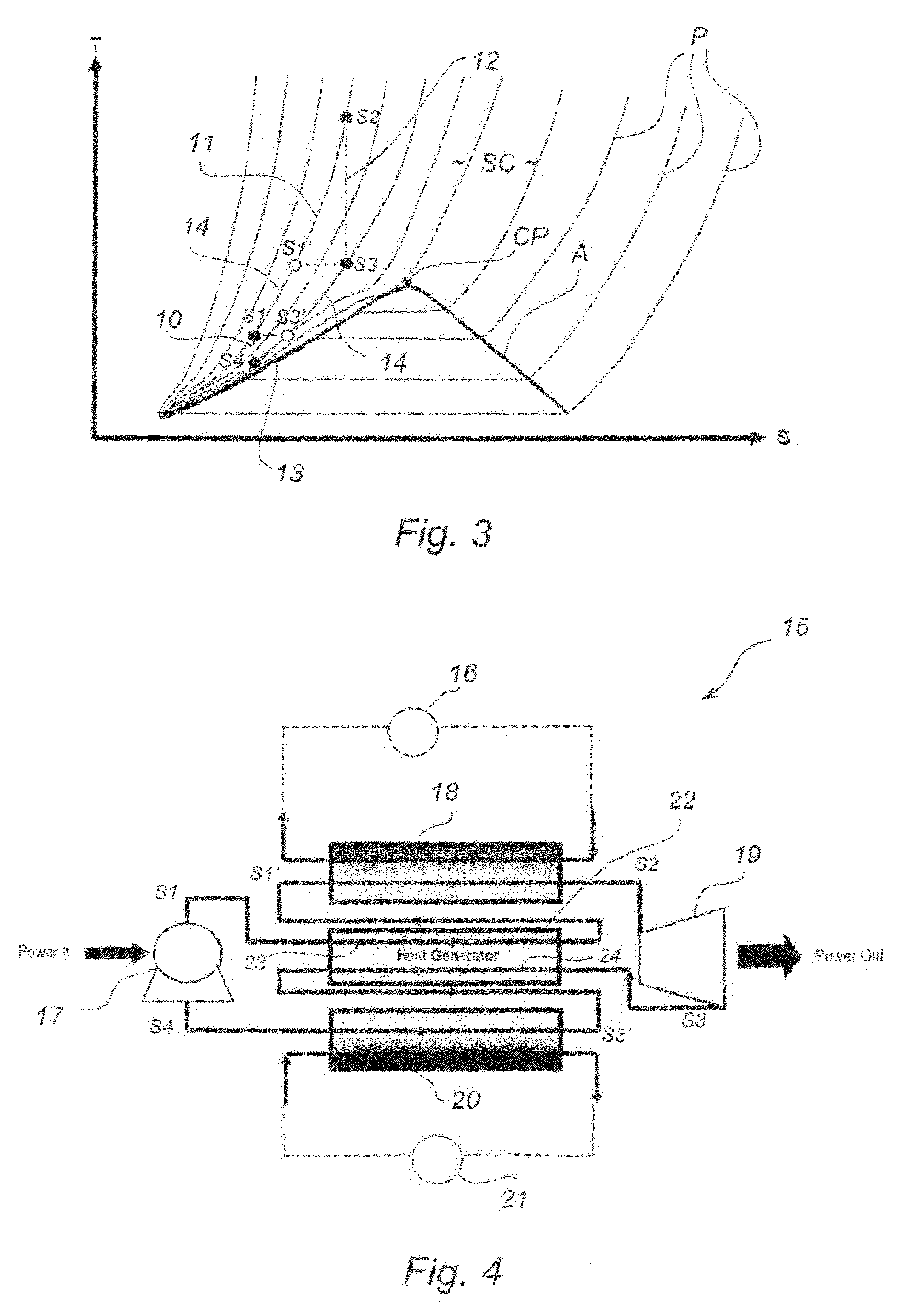Method and system for generating power from a heat source
a technology of heat source and heat source, which is applied in the direction of indirect heat exchangers, machines/engines, lighting and heating apparatus, etc., can solve the problems of reducing efficiency, large temperature mismatches between working fluids, and limited condensing direct steam cycles, etc., and achieve the effect of reducing the temperatur
- Summary
- Abstract
- Description
- Claims
- Application Information
AI Technical Summary
Benefits of technology
Problems solved by technology
Method used
Image
Examples
Embodiment Construction
[0046]FIG. 1 is a phase diagram of a pure working fluid in the temperature (T)-entropy (S) domain. In the diagram, dotted lines P are isobars representing constant pressure. The saturation dome A defines the boundary at which the working fluid is in a saturated state. Most conventional power cycles, such as the Rankine cycle shown in FIG. 2, operate in or around the saturation phase of the working fluid as defined by the saturation dome A so that any phase change associated with the cycle takes place under constant pressure and temperature. This means that energy from the heat source is lost during phase changes of the working fluid within the saturation dome A. By contrast, the embodiments of the invention avoid these heat losses by operating above the saturation dome A.
[0047]Referring to FIGS. 3 and 4, one embodiment of the invention is illustrated. As best shown in FIG. 3, the method of generating power from a heat source includes the step 10 of compressing a working fluid to inc...
PUM
 Login to View More
Login to View More Abstract
Description
Claims
Application Information
 Login to View More
Login to View More - R&D
- Intellectual Property
- Life Sciences
- Materials
- Tech Scout
- Unparalleled Data Quality
- Higher Quality Content
- 60% Fewer Hallucinations
Browse by: Latest US Patents, China's latest patents, Technical Efficacy Thesaurus, Application Domain, Technology Topic, Popular Technical Reports.
© 2025 PatSnap. All rights reserved.Legal|Privacy policy|Modern Slavery Act Transparency Statement|Sitemap|About US| Contact US: help@patsnap.com



